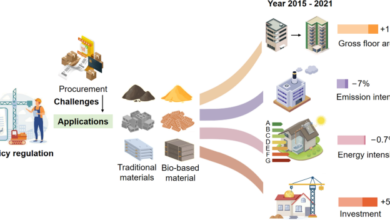Why OT Cybersecurity is Essential for Operational Safety

In today’s interconnected industrial landscape, the convergence of operational technology (OT) and information technology (IT) has revolutionized how we manage and control critical infrastructure. This integration brings unprecedented efficiency and productivity but exposes these systems to new vulnerabilities.
As we navigate this complex terrain, we must recognize the paramount importance of security measures. The field dedicated to protecting these vital systems has evolved rapidly in recent years, focusing on safeguarding the hardware and software that control industrial processes and infrastructure.
The Growing Importance of OT Cybersecurity in Industrial Operations
As industrial operations become more digitized, the risk of cyberattacks on these systems increases significantly. Threat actors are no longer just targeting traditional IT systems, they are also focusing on operational technology environments where any breach can have catastrophic consequences.
This has made OT cybersecurity a top priority for organizations, as it is essential to protect not only data but also physical systems that are critical for maintaining operational safety and reliability. The integration of IT and OT requires an approach to security that addresses the unique vulnerabilities of industrial environments.
The Evolving Threat Landscape
The threat landscape for industrial control systems (ICS) and supervisory control and data acquisition (SCADA) networks has grown exponentially. Cybercriminals and nation-state actors increasingly target these systems, recognizing their strategic value and potential for widespread disruption.
Recent incidents have highlighted the devastating consequences of successful attacks on critical infrastructure, including power grid disruptions causing widespread blackouts, water treatment plant sabotage endangering public health, and manufacturing facility shutdowns resulting in significant economic losses.
These events underscore the urgent need for comprehensive OT security strategies that address the unique challenges of industrial environments.
Key Differences Between IT and OT Security
While IT and OT security share some common principles, they differ significantly in their priorities and approaches:
| Aspect | IT Security | OT Security |
| Primary Focus | Data confidentiality and integrity | System availability and safety |
| Update Frequency | Regular patching and updates | Limited update windows due to 24/7 operations |
| System Lifespan | 3-5 years | 15-20 years or more |
| Protocol Complexity | Standardized protocols | Proprietary and legacy protocols |
| Impact of Failure | Data loss or business disruption | Potential physical harm or environmental damage |
Understanding these differences is crucial for developing effective OT cybersecurity strategies that balance security needs with operational requirements.
Essential Components of OT Cybersecurity
Asset Inventory and Management
A comprehensive inventory of all OT assets forms the foundation of any robust security program. This inventory should include hardware devices (PLCs, RTUs, HMIs), software applications and versions, network topology and connections, and firmware versions and patch levels. Maintaining an up-to-date asset inventory enables organizations to identify vulnerabilities, prioritize security measures, and respond quickly to emerging threats.
Network Segmentation and Access Control
Implementing strict network segmentation isolates critical OT systems from potential entry points. Organizations should create demilitarized zones (DMZs) between IT and OT networks and use firewalls and intrusion detection systems (IDS) to monitor and control traffic. Additionally, role-based access control (RBAC) is important for limiting user privileges. St. Louis IT consulting solutions, for instance, primarily help with this by evaluating your current setup and suggesting ways to enhance your network segmentation. They can guide you in creating effective DMZs, setting up firewalls and IDS properly, and implementing RBAC. By taking these steps, you can significantly reduce your attack surface and help contain any potential breaches, making your network more secure overall.
Continuous Monitoring and Anomaly Detection
Real-time monitoring of OT networks is essential for detecting and responding to security incidents. Organizations should deploy security information and event management (SIEM) solutions and utilize machine learning algorithms to identify anomalous behavior. Establishing a security operations center (SOC) for 24/7 monitoring ensures continuous vigilance. Early detection of security events allows for rapid response and mitigation, minimizing potential damage.
Incident Response and Recovery Planning
Developing and regularly testing incident response plans is crucial for maintaining operational continuity. Organizations should:
- Define clear roles and responsibilities for incident response teams
- Establish communication protocols for internal and external stakeholders
- Conduct regular tabletop exercises and simulations
A well-prepared organization can quickly contain and recover from security incidents, reducing downtime and potential losses.
Challenges in Implementing OT Cybersecurity
Several challenges make it difficult for an organization to have effective and sound security measures in the OT network. Often we find industries using systems, which may not have such features as are being incorporated into modern technological systems. These systems are sometimes difficult to replace and may lead to high costs as well as inconvenience which calls for innovation to provide for better security yet with efficiency.
Furthermore, this issue is compounded by the fact that there is a scarcity of capable human resource professionals who understand the intersection between OT and cybersecurity. Lack of technical skills remains a researched problem and as a result, organizations must ensure that they employ training programs and channel partnerships to develop these skills among the employees.
The standards challenging the industries are security demanding such as NERC CIP, and IEC. Admittedly, operation within these regulations puts pressure on managers to either find the right balance between legal compliance and cost efficiency.
Emerging Technologies and Future Trends
Looking at the future of OT security several emergent technologies hold the potential of facilitating improved security. Machine learning and artificial Intelligence provide algorithms that can identify new emerging trends and precursors of a threat before they happen. The use of blockchain technology means that there is the capability of securely recording activities and configurations of OT systems.
Zero Trust Architecture security model is aimed at denying any incoming connection by default and makes sure that each application, device, or user requesting access to the OT targets is authorized and safe. Further, Edge Computing can operate and process data closer to where it is collected thus offering better security for data that does not require to be transmitted through other networks.
Best Practices for OT Cybersecurity Implementation
To effectively protect OT environments, organizations should follow these best practices:
- Conduct regular risk assessments to identify vulnerabilities and prioritize security investments
- Implement defense-in-depth strategies, layering multiple security controls
- Develop and enforce strict cybersecurity policies and procedures
The first and primary activity is to ensure that all employees receive regular security awareness training while the second activity is forging relationships with vendors and peers to exchange threat information. This is done through assessing and verifying the security controls in place at a given intervals to check the relevancy of the measures used about the current threats.
Conclusion
Safeguarding our industrial infrastructure and its operational safety is made possible through OT cybersecurity. It has also become clear that the threat is still out there and as such organizations need to keep on embracing and enforcing security measures. This highlights that through the development of strong action plans that address the elements of the environment that make OT vulnerable to cyber risk, stronger systems can be created that are capable of withstanding cyber attacks and being restored to their pre-attack state.
With the risk level at an all-time high, now is the best time to take action. While it is essential to understand protecting the OT cybersecurity is not only a compliance or risk mitigation activity, it is an investment in asset safety, reliability, and the future of critical infrastructure.
FAQs
How does OT cybersecurity differ from traditional IT security?
OT cybersecurity focuses primarily on maintaining the availability and integrity of physical processes and equipment, whereas IT security primarily concerns data protection and confidentiality. OT environments often involve legacy systems with longer lifecycles and stricter operational requirements.
What are the most common threats to OT systems?
Common threats include malware specifically designed for industrial control systems, insider threats (both intentional and unintentional), and advanced persistent threats (APTs) from nation-state actors. Physical attacks and natural disasters also pose significant risks to OT environments.
How can organizations balance security needs with operational requirements in OT environments?
Organizations can achieve this balance by implementing segmented networks, utilizing unidirectional security gateways, conducting thorough risk assessments, and developing security policies that account for operational constraints. Regular communication between IT, OT, and security teams is crucial for finding effective solutions that meet both security and operational needs.
Stay in touch to get more news & updates on Usa Tech Magazine!





